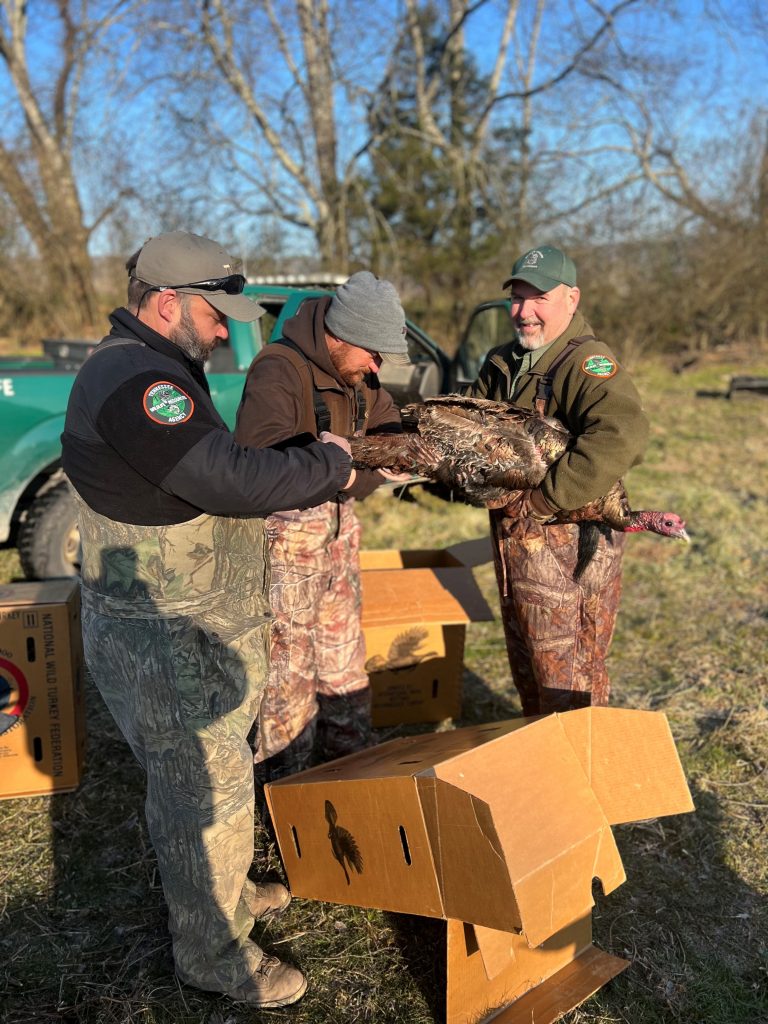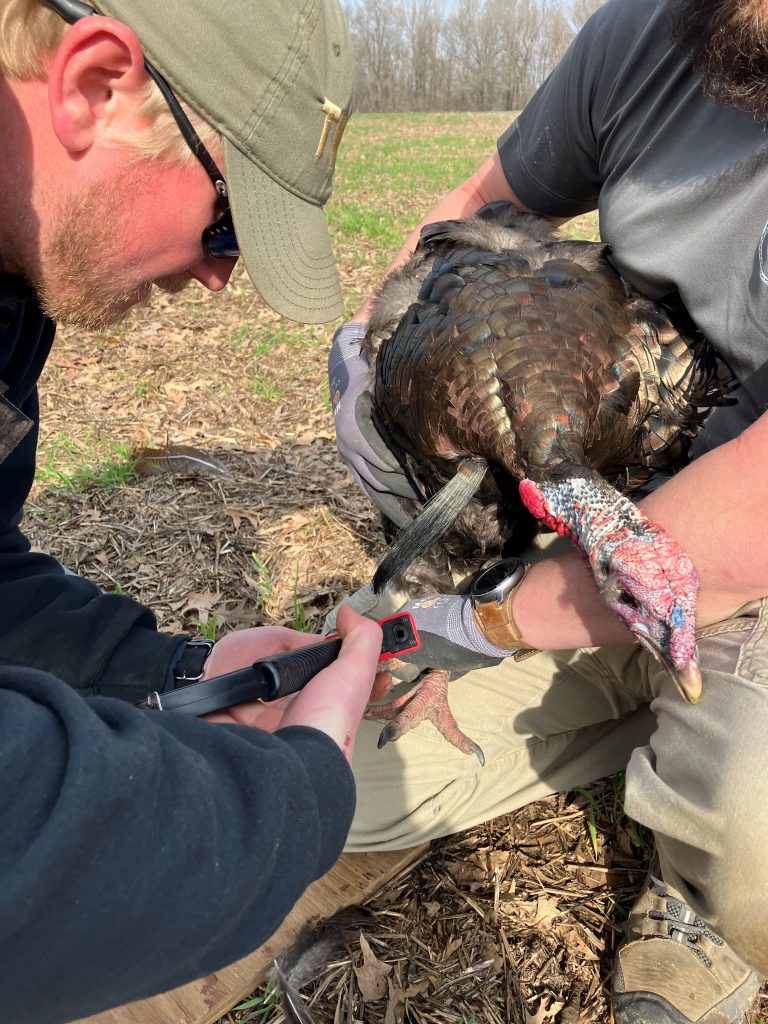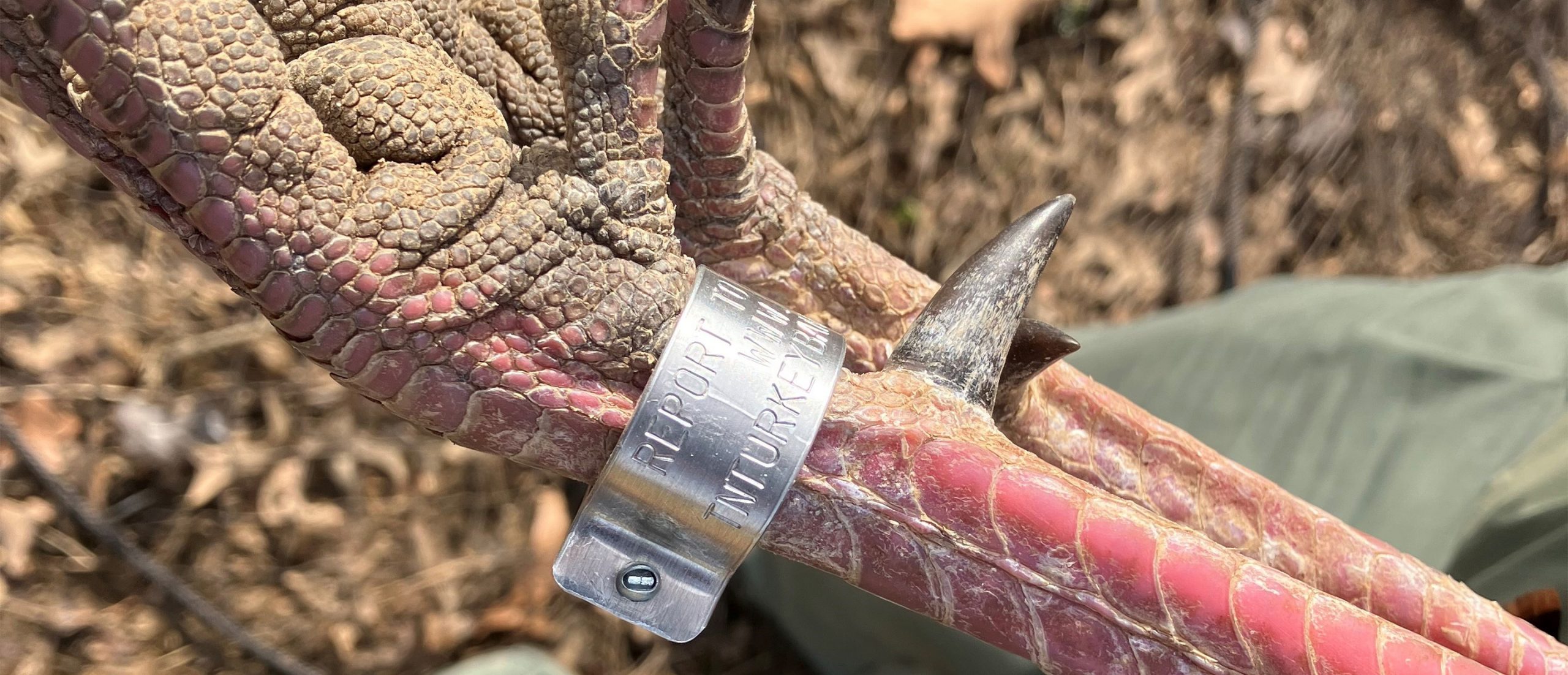Multi-State Wild Turkey Research One Year Closer
With many states across the country experiencing a decline in wild turkey populations, the NWTF and state agencies are deeply invested in better understanding what is happening to America’s favorite game bird.
And this is especially true in Tennessee and Kentucky, where the Tennessee Wildlife Resources Agency, Kentucky Department of Fisheries and Wildlife Resources, Tennessee Tech University and the NWTF are engaged in a collaborative, multi-state research project.

The Tennessee-Kentucky collaborative banding project is in the second year of its four-year duration and is one year closer to better understanding harvest and survival information that may be impacting populations.
The banding project seeks to gather data that will lead to a better understanding of the biological (i.e., mating phenology or timing), landscape (i.e., habitat quality) and regulatory factors (i.e., season timing, bag limits) that influence male harvest and survival rates across Tennessee and Kentucky.
Harvest rates can influence populations in two ways: one, the direct removal of juvenile and adult gobblers and, two, the removal of dominant males from the population.
“In the first case, harvesting too many adult males can shift the population balance to younger males, which makes the gobbler population highly dependent on annual recruitment and could negatively impact populations (not to mention hunting satisfaction) if too few adult males remain,” said Roger Shields, Tennessee Wildlife Resources Agency Wild turkey program coordinator. “The latter may affect the reproductive rates of females and lead to a population decline.”
Unlike other upland game birds in North America, wild turkeys are hunted and harvested during their breeding season, making spring turkey season's timing, duration and bag limits critical for population management.
It is vital for state agencies to understand the harvest rates of gobblers across the state to better inform their season-setting recommendations. And this is precisely what TWRA and KDFW are doing to gain insight into this essential information.
With dozens of study sites across both states, on both public and private land, the areas encompass varying landscapes in Tennessee and Kentucky. The data between the two agencies is being aggregated to paint a comprehensive picture of wild turkey harvest and survival information, previously unprecedented for the two states.
“Kentucky is very similar to Tennessee in most physical respects, yet Kentucky has not had reports of declining populations to the same degree as Tennessee, nor have they recorded the same declines in productivity that we have experienced,” Shields said. “The differences in spring harvest season dates and bag limits between years within Tennessee, and between Kentucky and Tennessee, can allow the influence of harvest regulations to be directly modeled and sensitivity of harvest rates to the various components assessed [such as season frameworks and habitat quality].”
Since 2021, and until 2024, researchers in Tennessee and Kentucky have been trapping birds over baited sites with rocket nets. The team classifies each male as a juvenile or an adult and then fits each bird with a numbered, riveted aluminum leg band.

“Our goal is to capture, leg-band, and release back in to the wild more than 300 male wild turkeys,” said Zak Danks, Kentucky Department of Fisheries and Wildlife Resources wild turkey program coordinator. “Four years of trapping is necessary because our analyses require at least three years of capture-recapture-recovery data from at least one cohort to effectively estimate survival and harvest rates.”
To date, 669 birds have been banded in Tennessee, 178 in 2021, 208 in 2022 and 283 in 2023. Of which, 359 were adults and 310 were jakes. So far, 107 of those bands have been recovered by hunters, with more sure to follow as the 2023 spring season opens up.
In Kentucky, where banding began in 2022, a total of 659 male turkeys have been banded. This includes 234 birds banded in 2022 and 425 in 2023. KDFWR staff are also capturing female turkeys (140 to date) and collecting blood and other biological samples from birds of both sexes for disease surveillance.
Collaborating and sharing information will provide TWRA and the KDFWR with a better understanding and give both agencies the science to guide management and ultimately help conserve turkeys. However, the project is still in full swing and many questions remain.
“Right now, it is too early to tell what is similar or different [between Tennessee and Kentucky],” said Abigail Riggs, graduate research assistant at TTU’s Cohen Wildlife Laboratory. “We are using the information on hunting regulations from both states to determine how harvest rates are affected by regulations.”
While the project is ongoing and has much more data collection and assessment before Riggs, Shields, Danks and the whole team can start making sense of the data, the project is steamrolling ahead through the multi-partner collaboration.
“This project is intriguing because of the collaborative effort from the state agencies, law enforcement, private landowners and the general public,” Riggs said. “We’ve had tremendous support from these groups, and seeing how passionate people are in aiding this effort has been encouraging. Plus, the project furthers awareness of Eastern wild turkey populations in the two states and the potential issues facing them. I’ll be curious what the data reveals to us and what that might mean for the two states.”
The NWTF and its chapters are also helping fund two other wild turkey research projects in Tennessee, one that is investigating egg fertilization and evidence of early embryo mortality in wild turkey eggs and one that is studying reproductive success, habitat use, disease ecology and more.
